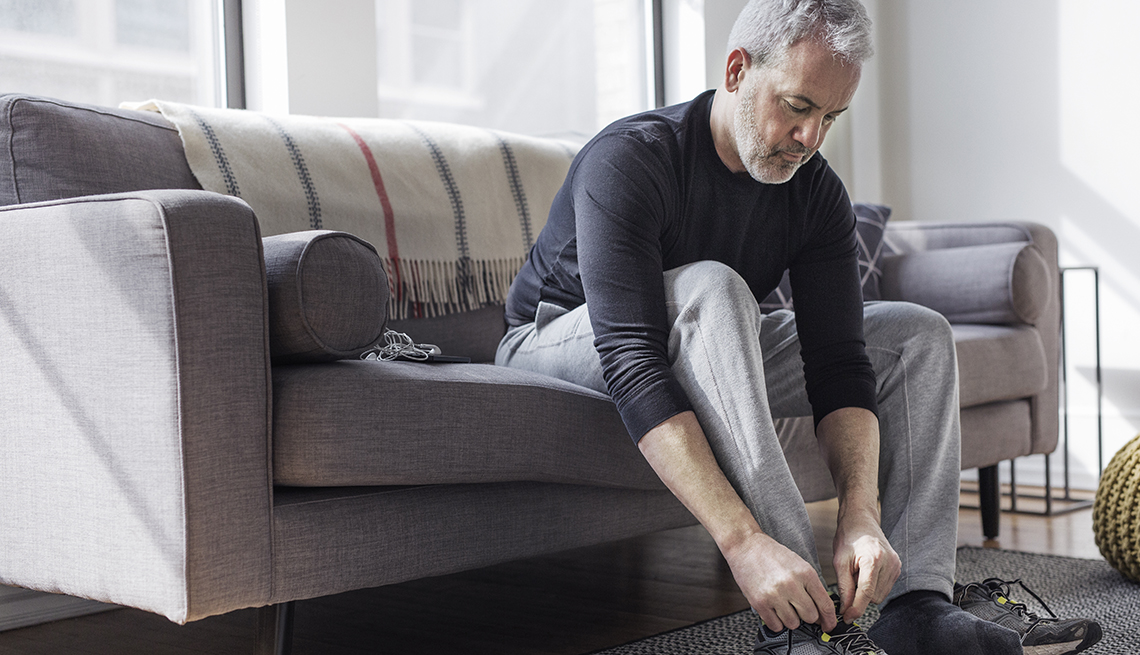Play all audios:
Start with 10 minutes at a comfortable pace — so you're not out of breath, Ambrose advises — then gradually increase to 20, then 30 minutes at a time. Once you start feeling stronger,
you can intersperse 30-second bouts of faster walking throughout your routine. "When someone is really debilitated, it can be hard to see measurable changes from exercise,” Gillanders
says. “Keep an activity log — it helps you see incremental changes” that can help you stay motivated to continue the physical activity. To rebuild physical strength and functionality,
it's especially important to target the hips and legs, says Andrew DeLeon, a home health physical therapist with Stella Maris, a long-term care and nursing home facility in Timonium,
Maryland. To do that, start with these exercises: ANKLE PUMPS: Lie on your back with your legs fully extended. Point your toes straight up toward the ceiling, then point them down so your
toes are parallel to the floor or bed. Repeat, gradually building up to eight repetitions at a time. SIT-TO-STAND: Start by sitting on the edge of a chair or bed, with your feet flat on the
floor, and place the back of a sturdy chair in front of your knees. Stand up while reaching for the back of the chair, pause at the top, then sit down again. Start with two to three
repetitions, gradually increasing to eight. BRIDGES: Lie on your back on a bed or the floor, with your knees bent, your feet flat on the bed or floor and your arms by your sides. As you
tighten your core, lift your hips off the floor until they are in line with your knees and shoulders; pause at the top, then lower your hips again. Start with two to three repetitions,
gradually increasing to five. PARTIAL SQUATS: Stand facing a countertop or the back of a sturdy chair, with your feet shoulder-width apart. Slowly bend both knees, pushing your hips back as
if you were going to sit in a chair behind you, but stop when your butt gets halfway to knee level. (Use the counter or chair in front of you for balance, if you need to.) Hold the squat for
eight seconds, then slowly stand up again. Start with two to three repetitions, gradually increasing to eight. Once these moves become easy for you, it's time to add more strengthening
exercises that will support the activities you do in daily life. To help people improve their strength and functionality after having COVID-19, Ambrose and her colleagues created the free
manual "Patient and Caregiver Guide to Managing COVID-19 Recovery at Home."

